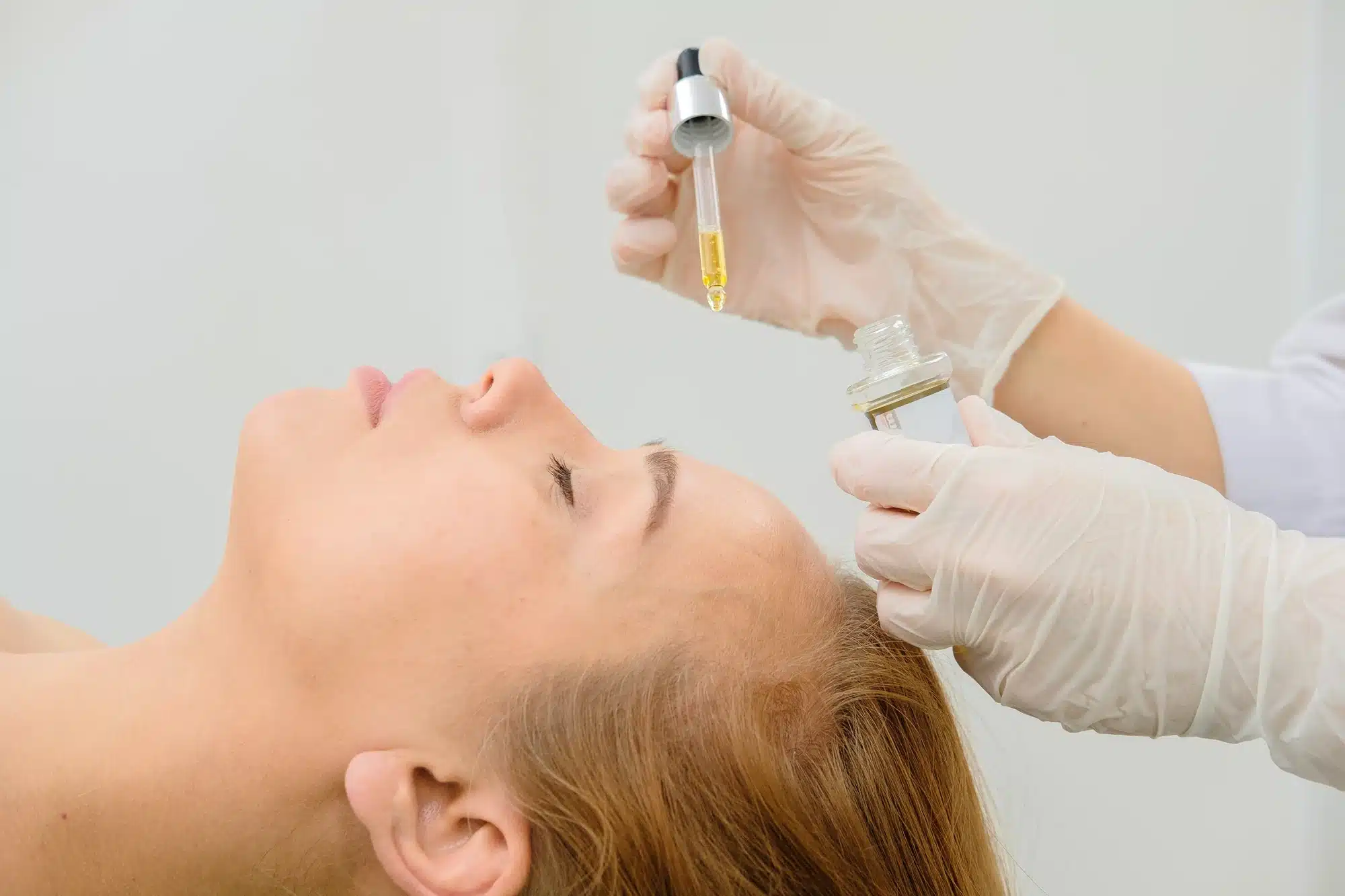
Despite extensive research, there is still much to be learned about hyaluronic acid (HA). This blog aims to educate consumers, physicians, and aestheticians about this chemical, which is widely used in the skincare sector. It is important to know what hyaluronic acid is, how it really affects the skin, and how effective it is as an anti-aging agent.
What is hyaluronic acid?
- HA is a biopolymer belonging to the class of glycosaminoglycans. These types of substances have the ability to attract a significant amount of water molecules.
- HA is found in almost all animal and human tissues, but it is most abundant in the skin (dermis and epidermis), where almost 50% of total body HA is contained.
- The discovery of HA is considered an evolutionary breakthrough in the clinical and cosmetic industries. Several HA-based medical products have been created, and more are currently being developed to alleviate various medical and cosmetic concerns.
Hyaluronic acid in history
- The term “hyaluronic acid” was first conceived by Karl Meyer and John Palmer in 1934. Its name was derived from the words hyaloid, which means “transparent,” and uronic acid, which is a class of sugar acids.
- The first medical applications of HA occurred in the late 1970s and 1980s, when the first hyaluronan biomedical product, Healon, was developed and approved for the use in eye surgery.
Chemical and structural properties of hyaluronic acid
- HA adopted the term hyaluronan in 1986 to distinguish between the different forms this molecule can take. HA is the acid form of this substance, while sodium hyaluronate is its salt form. In the body, HA naturally occurs as sodium hyaluronate.
- HA has a high molecular weight at 820.615g/mol. This is why the HA in most creams and serums cannot be absorbed by the skin: its molecules are simply too large to pass through the skin’s barrier.
- The chemical structure of HA is the same for all known species of living organisms, which indicates its biological significance in the body.
Biological functions of hyaluronic acid
- Hyaluronan has a lubricating role in connective tissues. It coats each cell to enhance the movement between tissue layers.
- HA contributes to the proliferation of cells, their movement, and cell-to-cell communication. It facilitates the transfer of nutrients from the bloodstream to the cells.
- It has anti-inflammatory properties and promotes wound healing.
- It increases the water binding capacity of the extracellular matrix of the skin and muscles.
Benefits of hyaluronic acid for the skin
- The most sought-after benefit of hyaluronic acid for the skin is hydration. Its ability to attract and hold up to 1000 times its weight in water promotes proper moisture balance in the skin.
- As an important component of the skin’s protective barrier, HA protects the skin from external stressors and free radicals.
- HA plays an important role in wound healing, maintaining skin elasticity, and tissue repair.
- HA’s anti-aging benefits are due to its supportive and hydrating properties. Moreover, it fights off free radicals and prevents UV damage—the main culprits of premature aging.
- The presence of HA in the epidermis decreases with age, even though it is still found in the dermis. This, and the steady loss of collagen, contributes to the hallmarks of aged skin, including atrophy, loss of elasticity, and dehydration.
Skincare products containing hyaluronic acid
Topical cosmetics
- HA is often found in creams, serums, and moisturizers, and is usually combined with other humectants (substances that reduce moisture loss).
- Topical HA cosmetics are often marketed as hydration boosters or anti-aging solutions due to its hydrating properties and skin-protecting abilities.
- HA is great for all skin types—even for oily, sensitive, or rosacea- and acne-prone skin.
Injectable cosmetics
- HA-based dermal fillers (e.g., Restylane, Juvederm, Belotero, and Princess) are used to reduce the visible signs of aging. These minimally invasive procedures involve the injection of HA into the skin, where it reduces wrinkles, restores volume, and fills hollow areas of the face.
- The fact that HA exhibits no tissue or species specificity, and therefore has low allergenicity (capacity to illicit allergic reactions), is crucial in minimizing any undesired effects from application.
- Hyaluronan is easily degradable in the body. As such, most cosmetic formulations are cross-linked to stabilize molecules and make them resistant to degradation.
- HA injections have been evaluated and approved by the FDA as a safe and effective treatment option for correcting moderate to deep facial wrinkles and folds.
- Non-cross-linked HA can also be used for biorevitalization. This promotes fibroblast stimulation and the regeneration of important components of the intracellular dermis. Biorevitalization can provide skin hydration, reduce fine lines, improve oily skin and enlarged pores, and treat skin irritation.
Oral supplements
- Studies have found that the oral supplementation of HA relieves wrinkles and moisturizes dry skin.
- Studies suggest that intra-articular hyaluronic acid treatments are as effective at reducing discomfort as NSAID pain relievers in patients with knee osteoarthritis.
- The recommended amount for orally-administered hyaluronic acid ranges from 60 to 200mg per day. Many supplements on the market may not contain the required amount of HA to provide true benefits.
Future applications of hyaluronic acid
- HA hydrogels are being investigated as a tissue engineered framework or scaffold for repairing injuries in the brain.
- Many HA-based product applications are still under development. HA’s use in drug delivery, tissue engineering, and regenerative medicine is showing true promise.
Related Articles
Joanna Carr
4 Signs of Fake Ozempic
Fake semaglutide products are leaving patients hospitalized. Learn how to spot fake Ozempic and ensure your patients safety.
Joanna Carr
Restylane Product Comparison: Exploring Formulations, Indications, and Applications
The Restylane product line offers a variety of fillers tailored to different aesthetic needs and skin concerns.
Joanna Carr
Harmonyca vs Sculptra – Which is the Best for You?
Harmonyca combines hyaluronic acid (HA) and calcium hydroxyapatite (CaHA) for instant volume and long-term skin improvements, making it ideal for quic...


